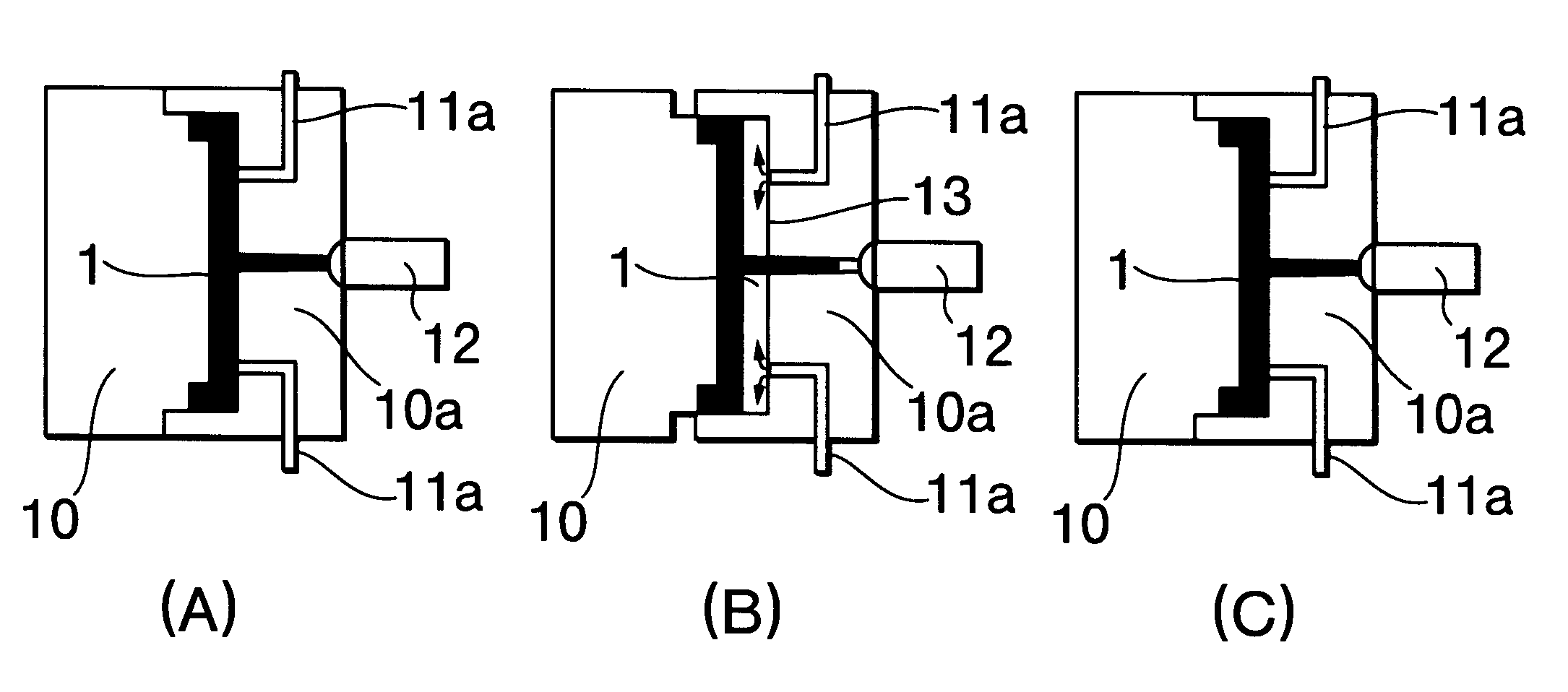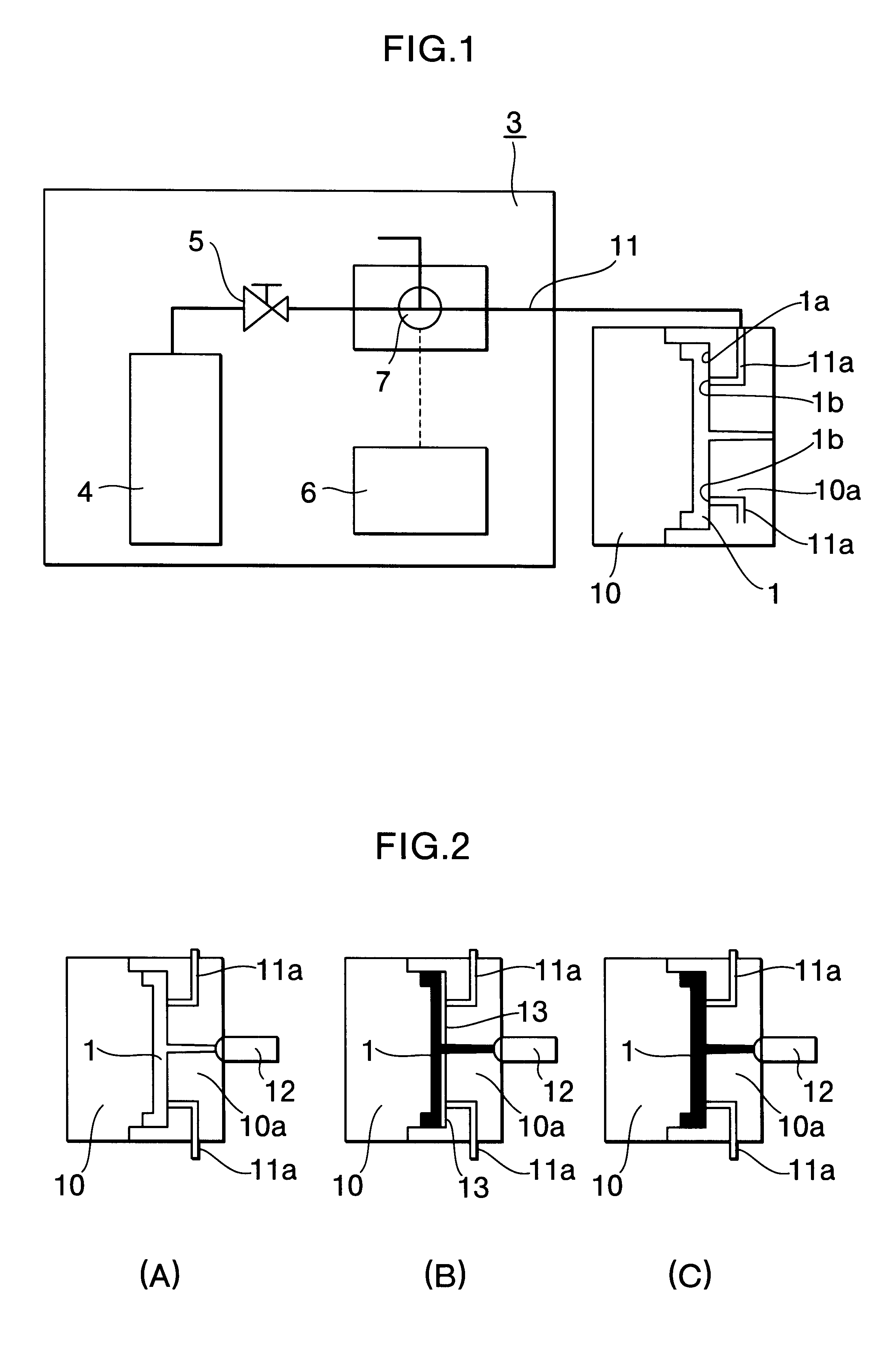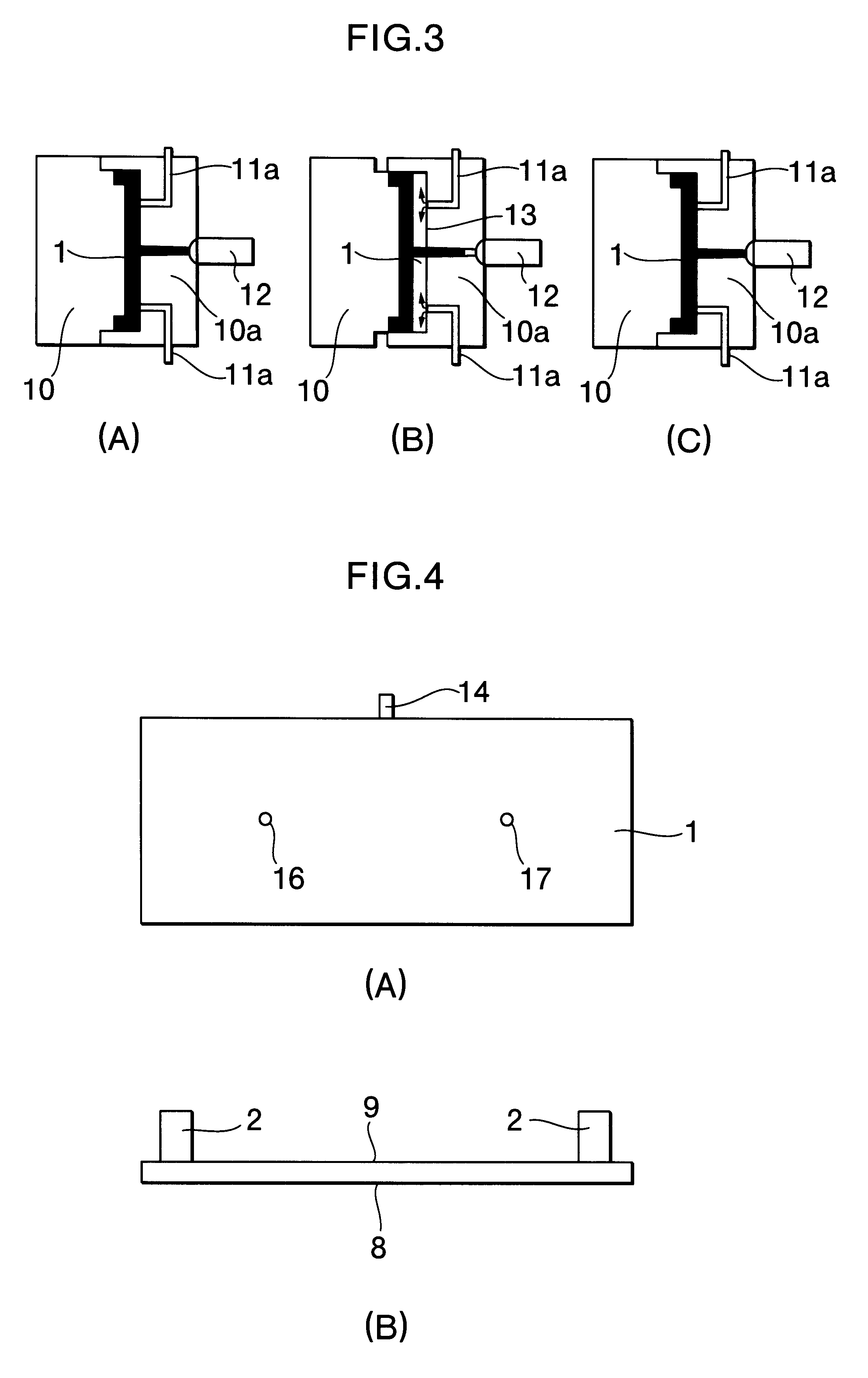Resin and gas injection molding method with subsequent cohering
a gas injection molding and resin injection technology, applied in the field of resin injection molding methods, can solve the problems of non-uniform flow, transcription defects, mold defects, etc., and achieve the effect of high solubility
- Summary
- Abstract
- Description
- Claims
- Application Information
AI Technical Summary
Benefits of technology
Problems solved by technology
Method used
Image
Examples
example 2
This example corresponds to another variant according to the invention. Molding as performed in the completely same way as that in Example 1 excluding the point that the carbon dioxide gas was continuously or intermittently injected into the space 13 formed. The total time consumed for injecting the gas was 2.0 sec, while exhaustion was executed for 0.2 sec, and in the case where gas injection was performed intermittently, the operation was divided to four stages, and an equal quantity of gas was injected in each stage. As a result, the molded product obtained as described above had excellent transcription, and had an excellent surface glossy level. The result of measurement of surface gloss level of the molded product is shown in Table 1.
Control 1
Molding was performed in the completely same way excluding the step relating to gas injection, which was not carried out. As a result, the molded product obtained as described had poor transcription qualities as compared to that in Example...
example 3
This example is yet another varient of the invention. Molding was performed in the completely same way excluding the point that, immediately after the melted resin was filled in, the surface of the fixed side die contacting visible side of the products was moved to the back to form the space 13 with the thickness of about 0.1 mm between the resin and the die surface, the carbon dioxide gas was injected into this space 13 like in Example 1, and then after the carbon dioxide gas was dissolved only in the resin surface (visible skin surface) of the visible side of the product, the die surface moved to the back was again moved forward, and then a further holding pressure was applied. The result of measurement of the gloss level of the molded product is shown in Table 1.
Control 2
Molding was performed in the completely same way as that in Example 2 excluding the step of injection of carbon dioxide gas, which was not carried out. As a result, it was confirmed that the molded product obtain...
example 4
Molding was performed in the completely same way as in Example 1 excluding the point that a gas injection inlet was provided at one place. It was confirmed that the molded product obtained as described above had excellent transcription qualities and an excellent surface gloss level of the molded product. The result of measurement of the surface gloss level of the molded product is shown in Table 1.
FIG. 4 and FIG. 5 shows the molded products obtained in the examples described above. In these figures, designated at the reference numeral 8 is a visible surface of the molded product, at 9 a not-visible surface thereof, at 14 a gate position in the molded product, at 15 a position of the inlet 1b when the gas is injected from one place, and at the reference numerals 16 and 17 positions of the inlets when gas is injected from two places.
With the invention as described in claims 1 to 6, immediately after a resin is filled in a die cavity, a space is formed between a surface of a die in the...
PUM
| Property | Measurement | Unit |
|---|---|---|
| size | aaaaa | aaaaa |
| temperature | aaaaa | aaaaa |
| temperature | aaaaa | aaaaa |
Abstract
Description
Claims
Application Information
 Login to View More
Login to View More - R&D
- Intellectual Property
- Life Sciences
- Materials
- Tech Scout
- Unparalleled Data Quality
- Higher Quality Content
- 60% Fewer Hallucinations
Browse by: Latest US Patents, China's latest patents, Technical Efficacy Thesaurus, Application Domain, Technology Topic, Popular Technical Reports.
© 2025 PatSnap. All rights reserved.Legal|Privacy policy|Modern Slavery Act Transparency Statement|Sitemap|About US| Contact US: help@patsnap.com



